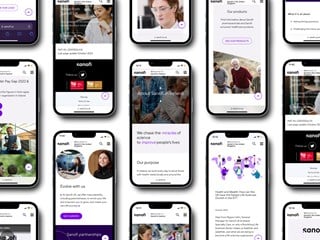October 28, 2018
Content done well can create value; content done poorly can destroy you. In a series of four blogposts, we hope to convince you to start putting content first, distribute it correctly, and share our aspirations for a future of relevant content only.
How to get the right content in front of the right audience
When you have invested time and effort in creating relevant content, it is always upsetting when the content does not get any traffic or lead to the next step in the funnel. But if you have a content first mindset, you’ll have a very good idea about who your audience is and whom you want to target. That makes distribution so much more effective!
It will require a few steps, but the journey to relevant distribution is pretty straightforward when you have the insights from your content creation. To make sure your content is put to best use, let us go through how you can distribute the right content to the right people.
Grouping and segmentation
Following a content first approach as described by our experts, you have already defined your core content and have the characteristics of your actual and future customers in mind. Use these insights and create groups based on interests and traits – we'll call those your segments. It is important not to limit your segments to your customer base as anonymous users can also have traits of relevance, such as having browsed specific pages on your website. Group your content with the different segments you think could be relevant, like “first time users” or “product introduction”. These segments will be very important when distributing your content.
Web vs emails
When you have determined your segments, you need to think about how your content is or should be delivered. With marketing automation, you can generally deliver the same content on the web as on email. You’re just limited by the capabilities of the technology.
Content on the web requires an active user. A user must go to a page on your website and it is up to the website to deliver the relevant content users are looking for. Websites usually do so with static content, but the content on pages can be much more dynamic to meet users’ needs or interests.
On email, users are passive recipients of content. They are just part of a database that you target with your content. Email marketing is useful when pushing content to relevant segments, as opposed to a one-size-fits-all newsletter. There are more limitations on email though, as they have to work on old devices and can’t be as interactive as web content.
Either way, a data management platform (DMP) is ideal for setting up the segments you’ve created for use on the web and on emails
Pulling out the most relevant content on your webpage
If the web is where you will deliver content, the site needs to be set up so that it can pull out the content that you want it to. You need to tag the content using the segments you determined so the website knows what content to display for each user. Most websites support tagging of content, but make sure it’s enabled both in the content editor and on the page template itself.
For example, you may have an area on your front-page that simply fetches the most recent blog post. Start by taking that area and changing the rules so it fetches not just the newest items, but also those that match the segment of the user. You can use the segments you determined earlier or the segments can also come from your customer relationship management (CRM) system if you’re advanced. You should be thinking right now that you need to have a relationship between the tags and segments, and you’re right. It can be done either in the segmentation or tagging area of your platform. If you’re trying to learn and get the hang of it, it’s also okay to do segmentation directly on your content. Again, this is something most platforms support, but it’s not scalable. If you later want to apply machine learning and AI to target your content, the AI needs to know what is in your content and it would usually do that based on the tags.
Pushing your content out through email
When working with email, a lot of time is often spent putting together content and trying to be relevant for everyone. However, it can be a real challenge to be equally relevant for each user in your audience. Content on the web can be tagged with a specific segment – what can you do for emails? With good integrated automation, your web content is already available to pushed to your email.
If assets are not shared between your web and email platform, though, all content and images must be manually copied and uploaded. Segments need to be added to each content piece so that email recipients will only see what’s relevant for them. This works great if you have a lot of content and don’t want to manage multiple emails going out. If you only have a few content pieces, you can keep it simple by simply having separate send-outs. But, you have to be careful and make sure that you don’t end up sending multiple emails to the same user. Many automation platforms support all sorts of channels like app push notifications, text messages or similar. The only difference is really just how it’s sent.
Worth your while!
While tagging and segmentation is a lot of work, it sounds worse than it is. Having a platform that does this seamlessly makes everything much easier. If you have an automation platform that supports all your channels and is integrated with your CRM data, it is a question of using a few minutes on some of your existing content to set up the proper tagging and segments. This gives you the opportunity to focus on other tasks or put even more effort into your content production.
If you are unsure of your platform’s capabilities, don’t worry - there is a good chance that your platform supports tagging and segmentation. But you need to add a tracking script to your website that makes it possible for you to target users based on their behaviour.
Still not getting the traction you dreamed of?
If you are not getting the traction you hoped, push your content further out. You probably have more channels beyond your website and email. The same principles apply to when you push content out on social media, apps or paid ads. Build your segment and push it. Initially, you probably do not want to be too specific in your segmentation. This can be risky for your relevance, which is also why it is a good idea to continuously A/B-test.
What's the next step?
The next step regarding content and relevant distribution relates to the above mentioned automated platforms and how they can help you create live and fluid content, that's based on actual interests rather than segments. If this interests you, it's your lucky day! - The final blogpost in our series about content focuses on that very subject.
If you're not there yet, never hesitate to reach out for any other interests you may have.








